Guitar World Verdict
All-solid woods, amazing build quality, stage-ready plus a very nice gigbag thrown in? These models really are a no-brainer.
Pros
- +
Splendid builds.
- +
Mahogany model is good and punchy acoustically.
- +
It's louder than the others when amplified.
- +
Spruce model offers great value traditional OM sounds.
Cons
- -
Mahogany model is a little midrange heavy when plugged in.
- -
The Spruce's Trans Black finish might put the purists off.
- -
Blackwood is an outsider in the top-wood world, so shock of the new may deter some.
You can trust Guitar World
In a slight diversion away from our more customary ‘round-up’ review where we take similar models from different manufacturers and compare them, this time we’ve taken a trio from a single maker. Why? Because Cort’s Core-OC range shown here features instruments that are identical in terms of build and only differ in the all-solid timber used for their tops, backs and sides, and so it seems an excellent opportunity to explore the theory that different woods offer a subtle difference in tone.
Cort itself says, “These carefully crafted instruments are all-solid wood and we offer them in three tonewood options to allow you to select the exact sound that you prefer.” Which is kinda what we just said. But the company continues: “The idea behind the Core range is that Cort wanted to make an all-solid electro-cutaway at a price point a beginner could afford, but with no compromises on build quality or specification, that could be used on any stage.” All admirable stuff.
The wood variations here are all-mahogany, spruce top with mahogany back and sides, and an all-blackwood model. So is it a case of ‘Vive la différence’? Or just, ‘Sorry guys, but… meh’? Let’s dig in, don our lab coats and start the experiment.
To begin with it might be a good idea to temporarily shelve the differences between these three acoustics and consider what they share in common.
In basic terms, the Core models are OM-sized electro-cutaways that feature dovetail-jointed mahogany necks with ovangkol fretboards and bridges, 20 frets and a 643mm (25.3-inch) scale length. Tuners are unbranded die-cast with black buttons, nuts and saddles are bone, and the X-bracing underneath the tops is hand-scalloped.
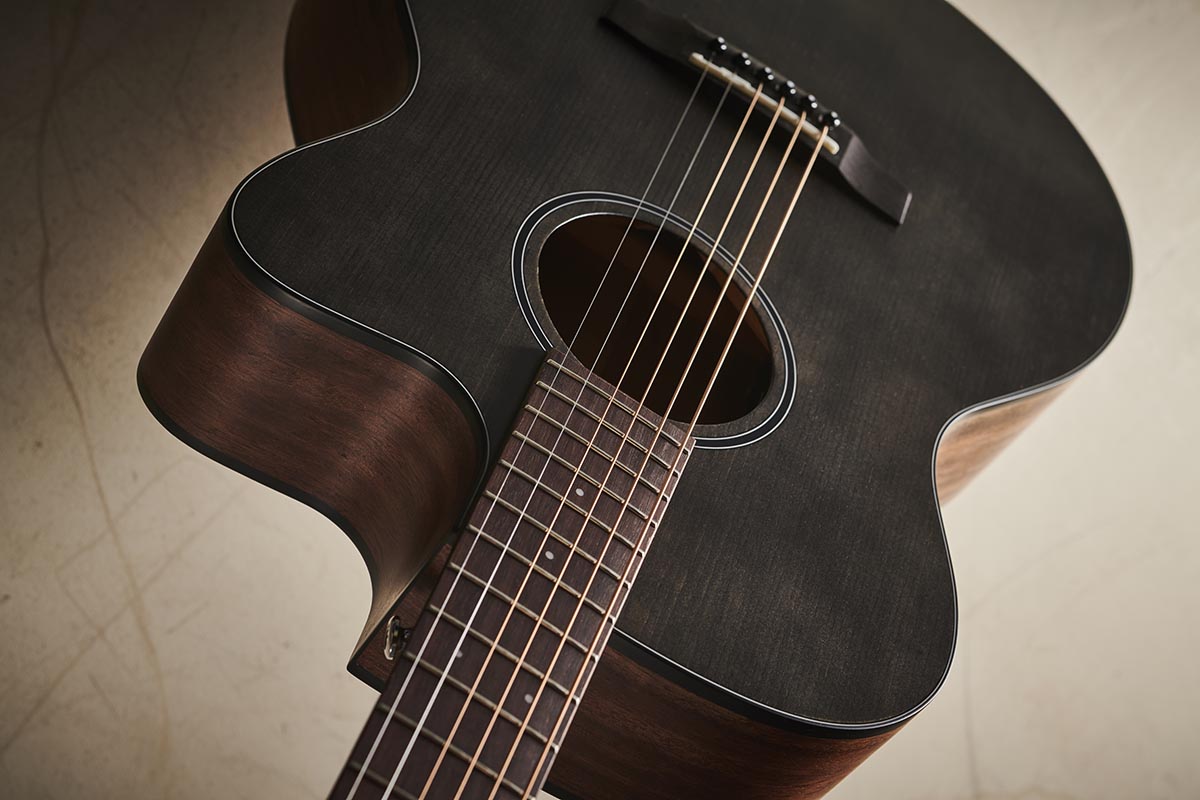
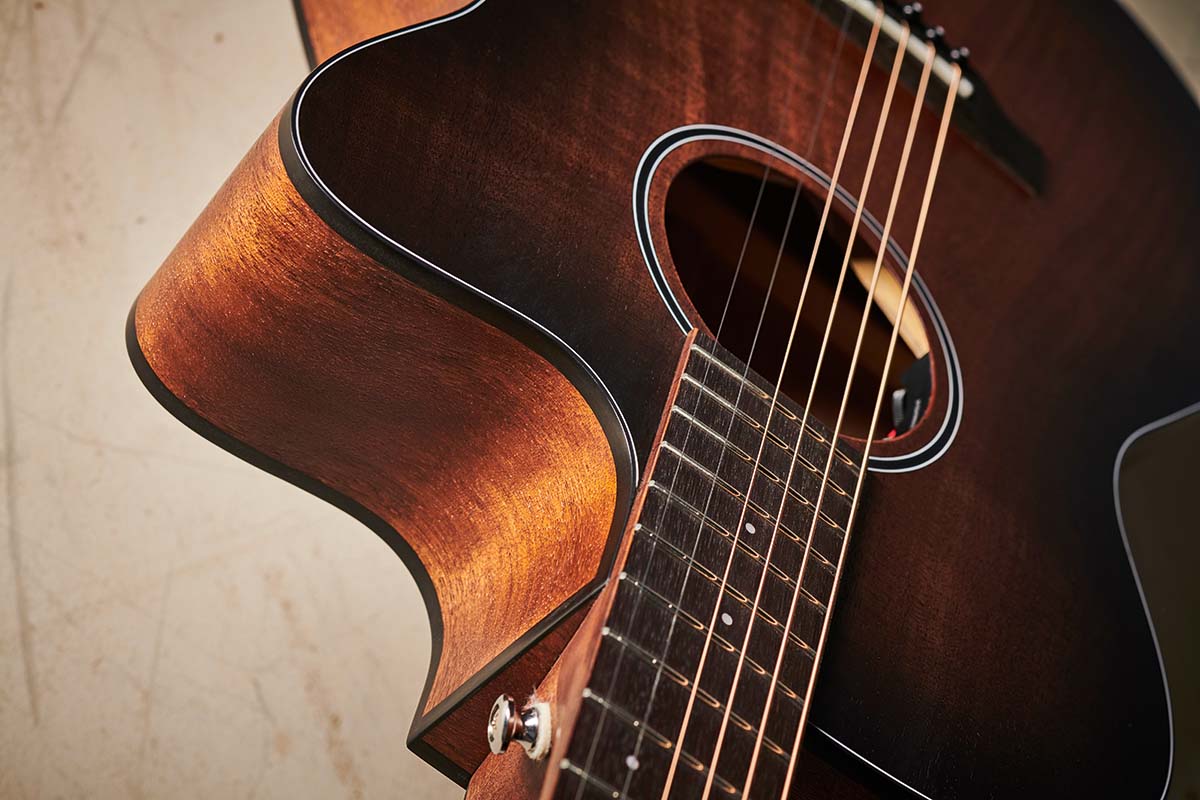
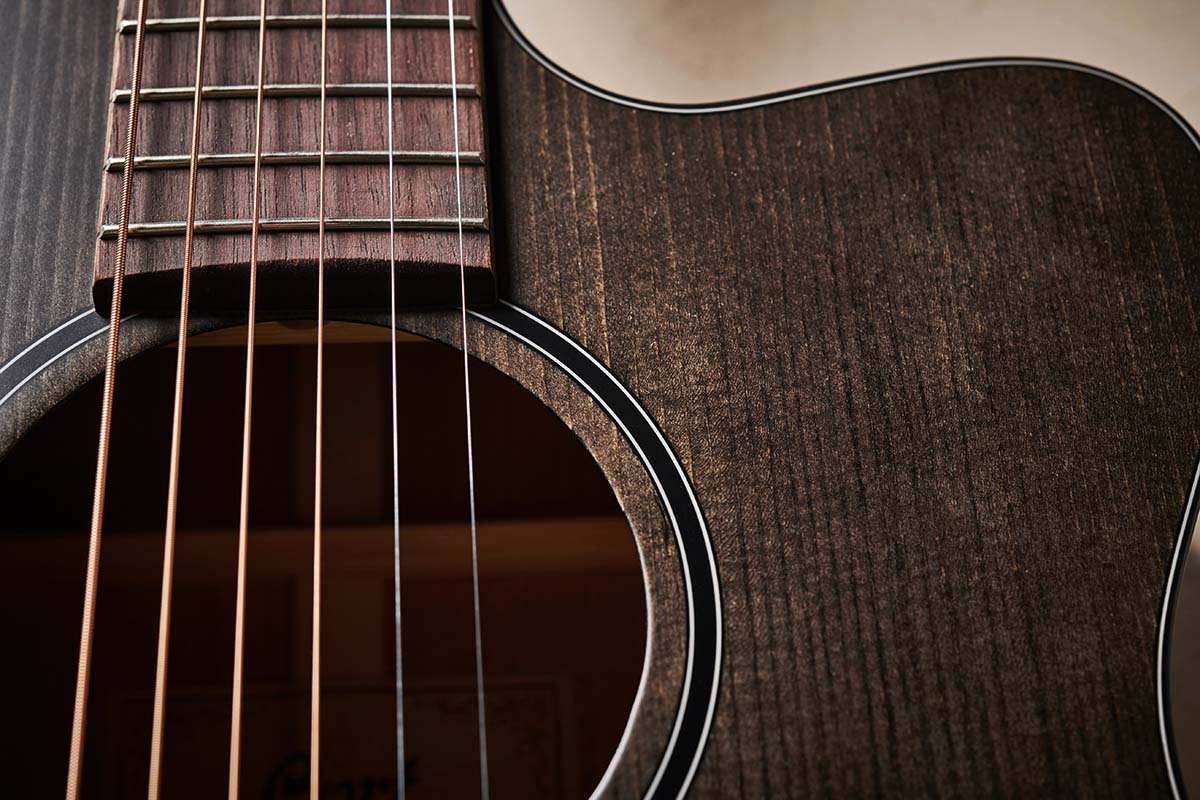
Pickup duties are carried out by Fishman with its tried-and-trusted Sonicore/Sonitone combo, with the controls – volume and tone – secreted away inside the soundhole. So, for around the £500 mark, you’re getting all-solid woods, stage readiness, Cort’s renown for high-spec construction plus a rather nice padded gigbag. Sounds like a bargain to us. But let’s take a closer look at what we can expect from the array of body woods on offer here.
We’ll look at mahogany first. All-mahogany body construction is far from being a new thing as many manufacturers, notably Martin, have been championing this particular configuration for many years. As a tonewood, it’s an all-rounder with a reputation for midrange punch that responds well to a variety of picking styles and is a sonic favourite among blues players in particular.
Fingerstyle players might choose a smaller body size for a little more focus and to take advantage of the warmth and roundness that come from sensitive playing. Bold strummers would opt for a dreadnought for sheer power and mahogany’s blooming harmonics when played hard.
Seeing as the OM body size is neither small nor particularly large, it’s a fair bet to say that the Core Mahogany could prove to have a foot in both camps and end up being something of an everyman instrument. We’ll see in a little while.
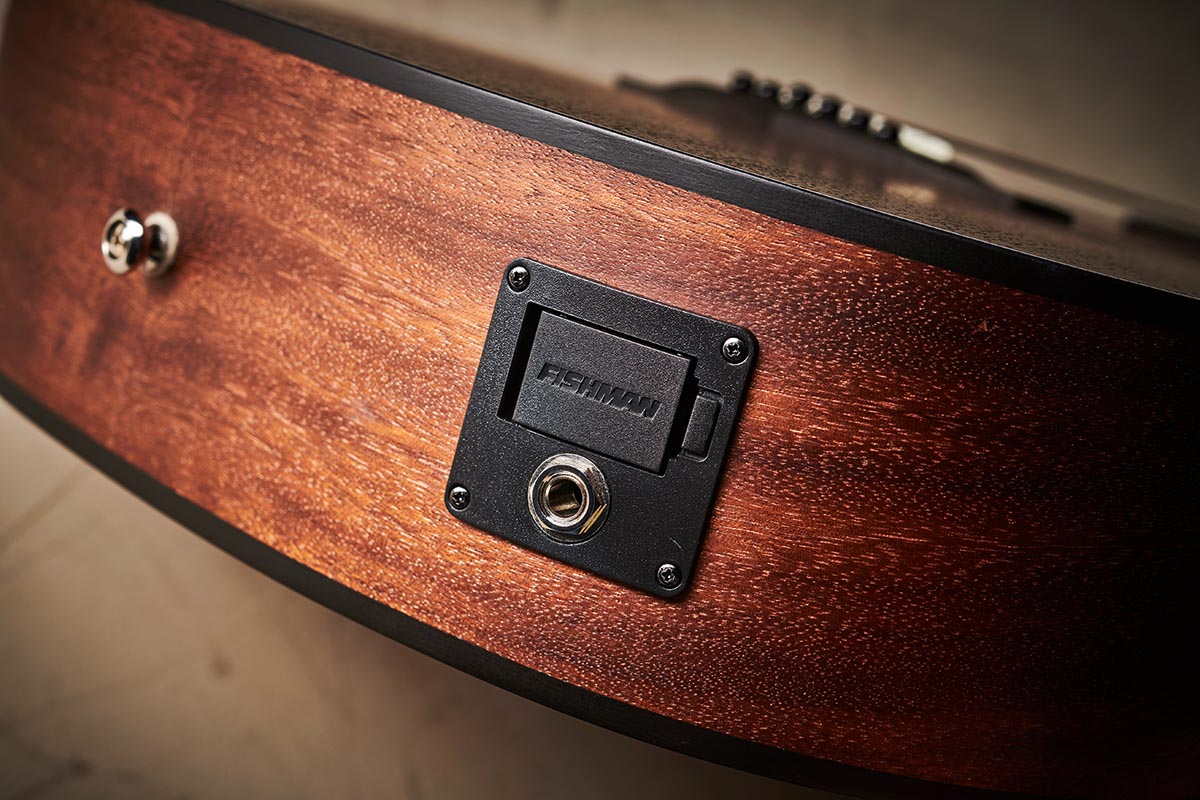
Meanwhile, our next contender is Cort’s spruce/mahogany combo. As far as traditional acoustic guitar making goes, you’d be hard stretched to find a more common woody cocktail on an acoustic guitar. The only other partnership that comes close would be spruce and rosewood, so Cort is definitely onto a winner here for ears that are used to hearing classic acoustic guitar sounds.
Given what we’ve already said about mahogany’s midrange clout, pairing it with Sitka spruce has become something of a standard in modern acoustic manufacturing. Sitka is a luthier’s favourite because, apart from being easy to work with, it has a broad dynamic range and great projection and volume. In short, it’s a punchy little number that ranks very high on the list of highly desirable timber in even the most expensive bespoke instruments.
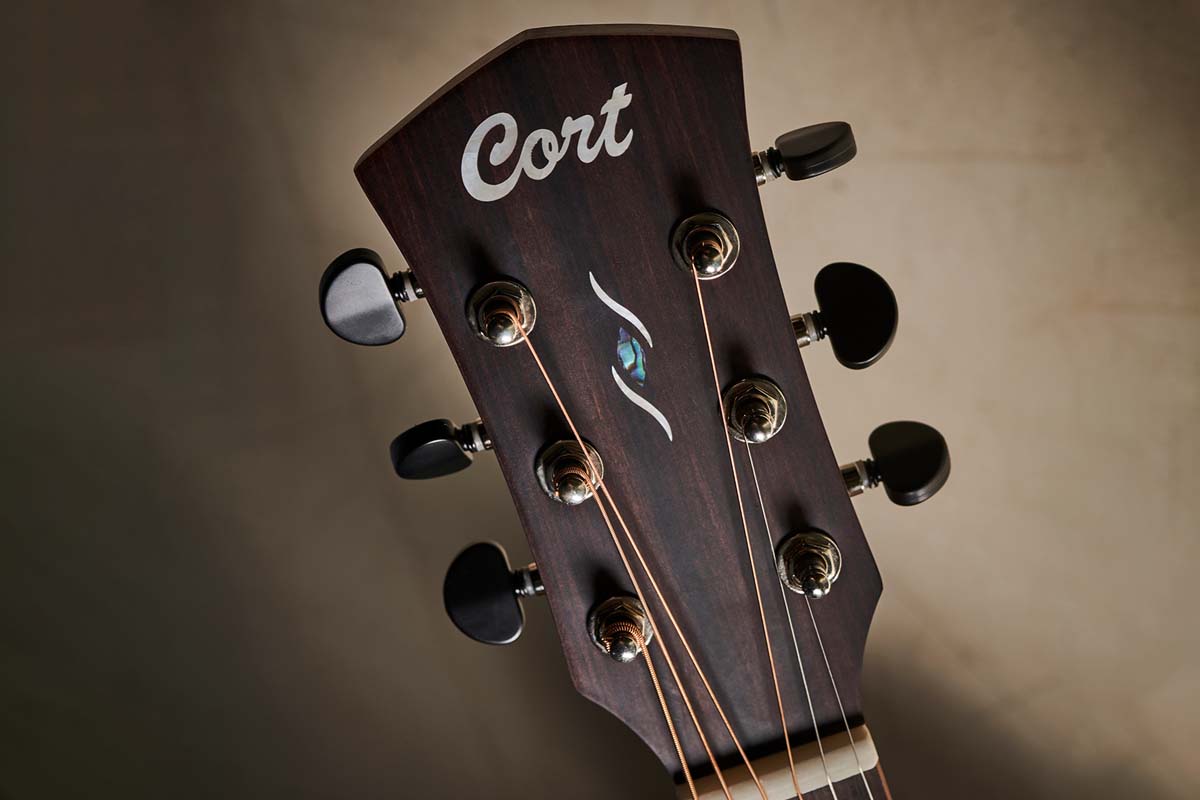
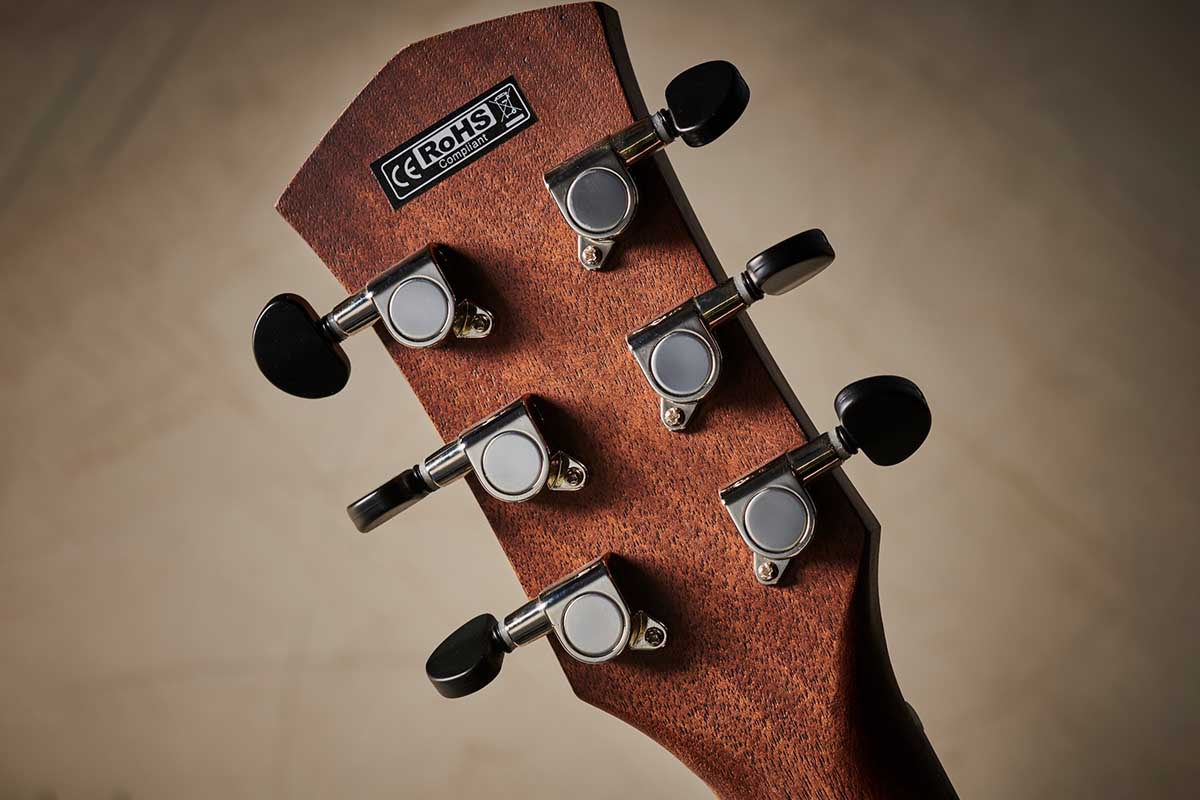

Third in line is blackwood. Now we’ll say straight off the bat that although we’re familiar with the charms of this particular tonewood, we’ve never come across it as a top wood before. Cort doesn’t say in its spec where this particular blackwood hails from, but it’s generally accepted that the king of the crop comes from Africa, although Tasmanian, Australian and Indian blackwood has lumbered onto our radar in the past.
Despite its name, African blackwood is actually a rosewood and got its name because of its deep, rich black hue. The other variants don’t share the same genus designation. The African variety is an amazingly resonant, dense and heavy wood and sits between the thrones of the other regal tonewoods such as Brazilian rosewood and mahogany in terms of sound output.
African blackwood is getting harder to find and so our suspicion here is that we’re dealing with a blackwood that’s – how shall we put it? – not of noble birth. All will be revealed when we begin to audition this very handsome trio…
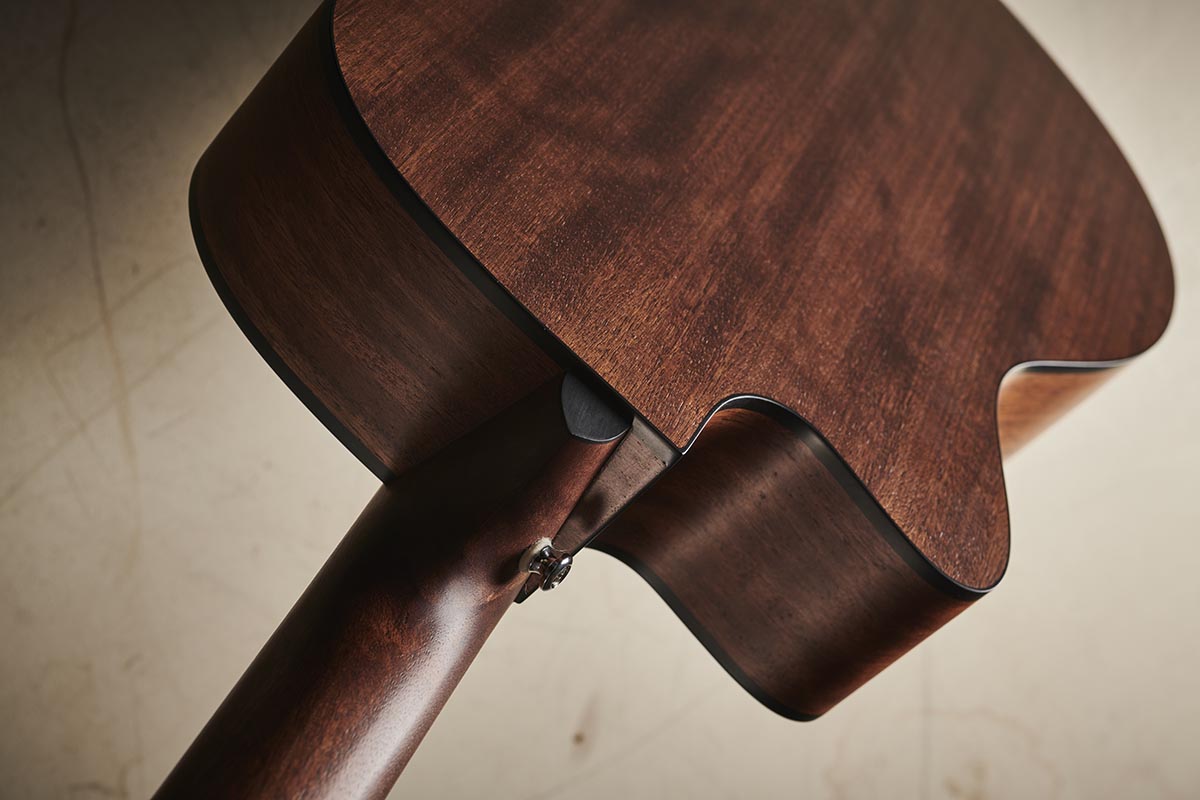
Feel & Sounds
In terms of feel there is very little to separate the three; the build is almost exactly the same across the board. There is a slight difference in weight, but we only know that because we weighed each of them for the spec check at the end of this review! It’s doubtful that anyone would be able to detect the fractional difference in this respect. In any case, we’d probably fail a blindfold test if the only criteria were weight and general feel.
In terms of feel there is very little to separate the three; the build is almost exactly the same across the board. There is a slight difference in weight, but we only know that because we weighed each of them for the spec check at the end of this review! It’s doubtful that anyone would be able to detect the fractional difference in this respect. In any case, we’d probably fail a blindfold test if the only criteria were weight and general feel.
As we’ve mentioned, the workmanship that we’ve seen recently from Cort has been top notch, and the same is true here. Even under the close scrutiny that accompanies these reviews, we couldn’t find a hair out of place. But you want us to address the elephant in the room and tell you how they sound, don’t you? Fear not, the wait is over.
The workmanship that we’ve seen recently from Cort has been top notch, and the same is true here. Even under the close scrutiny that accompanies these reviews, we couldn’t find a hair out of place
In no particular order, the blackwood variant is a belter. Loud and suitably proud, it has a good, full midrange and a rounded bottom-end. Trebles are well represented, too, and both fingerstyle and played with a pick it packs quite a sophisticated wallop.
Next in line is the spruce/mahogany combo and it’s everything you’d expect from such a traditional marriage of bodywoods. It has sweetness and power in all the accustomed places with an airy but punchy bass so typical of the OM. Lastly, the all-mahogany version plays true to form with a very slightly warmer edge than its siblings and plenty of good, throaty grunt when picked hard. Bluesers will love it.
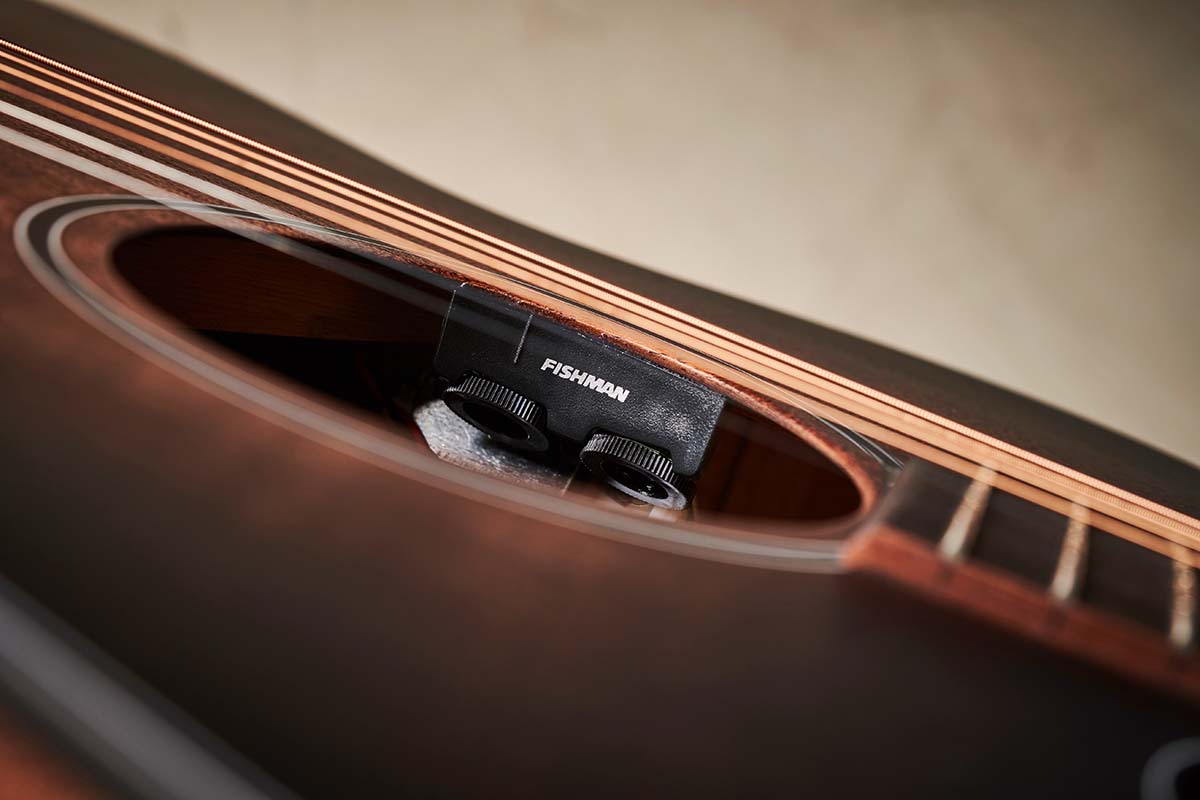

Through our well-travelled AER Compact 60 each of the Corts took its tonal stamp into the amplified domain, and – with the same settings on the amp – the mahogany was the loudest of the three on test, the spruce top performed to character with everything you’d hope to hear from a spruce/mahogany OM, and the blackwood was the most anonymous, tonally speaking. Which is not a bad thing, necessarily – just think of it as being more of a road less travelled.
Verdict
If a victor has to be declared then, for us at least, the spruce top hops onto the winner’s podium. Whether this is because it satisfies all the tonal expectations of a more traditional OM is hard to say, but it just seems to nudge past the post as an all-rounder.
The mahogany takes second place for pretty much the same reason in that it does what you think it’s going to do when you pick it up. The blackwood remains the outsider. It’s definitely a good instrument, but more of an unfamiliar voice.
Then we ought to consider the price. If these guitars all sat in the $/£750 bracket we wouldn’t be too surprised, but the fact that they circle the $/£500 point is very good indeed.
Specs
Cort Core-OC Mahogany
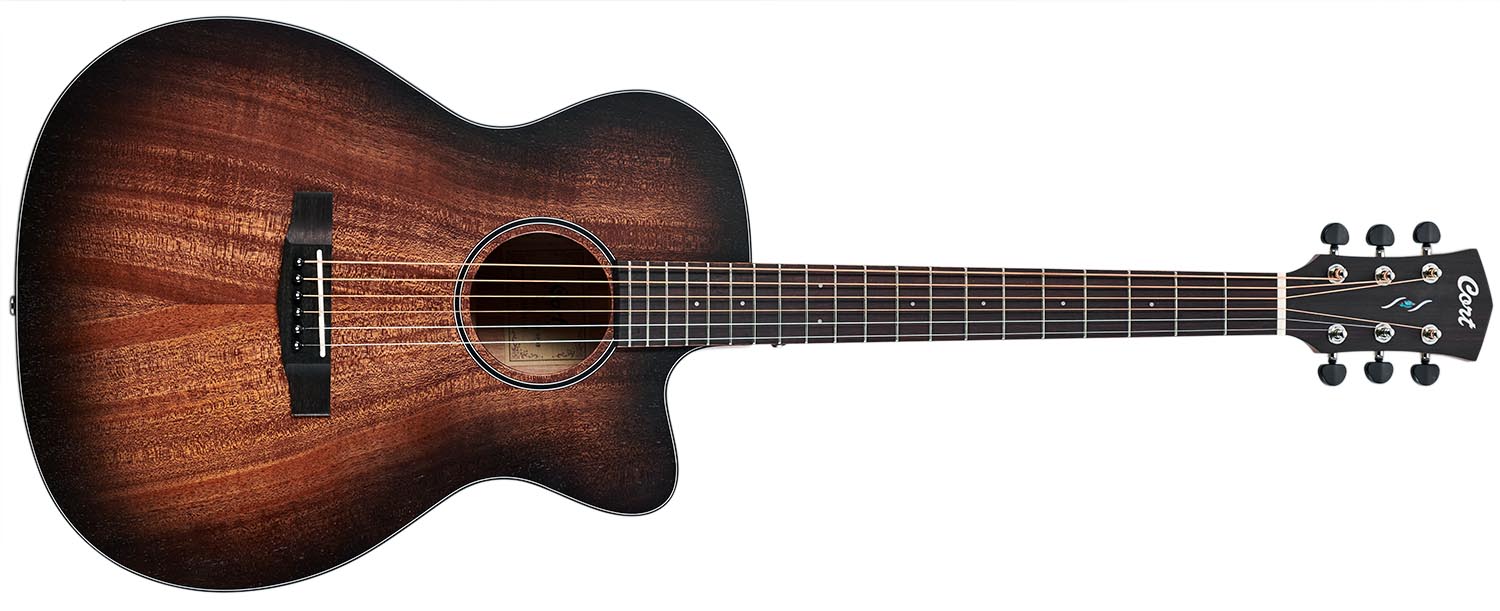
- PRICE: $/£499 (inc padded gigbag)
- ORIGIN: China
- TYPE: OM cutaway
- TOP: Mahogany
- BACK/SIDES: Mahogany
- MAX RIM DEPTH: 103mm
- MAX BODY WIDTH: 381mm
- NECK: Mahogany
- SCALE LENGTH: 643mm (25.3”)
- TUNERS: Unbranded die-cast/black buttons
- NUT/WIDTH: Bone/43mm
- FINGERBOARD: Ovangkol
- FRETS: 20
- BRIDGE/SPACING: Ovangkol/bone saddle/55mm
- ELECTRICS: Fishman Sonicore/Sonitone
- WEIGHT (kg/lb): 1.66/3.65
- OPTIONS: None
- RANGE OPTIONS: Basically what you see here is what’s available: all-mahogany, spruce/mahogany, and blackwood FINISH: Black Burst – open pore matte
Cort Core-OC Spruce
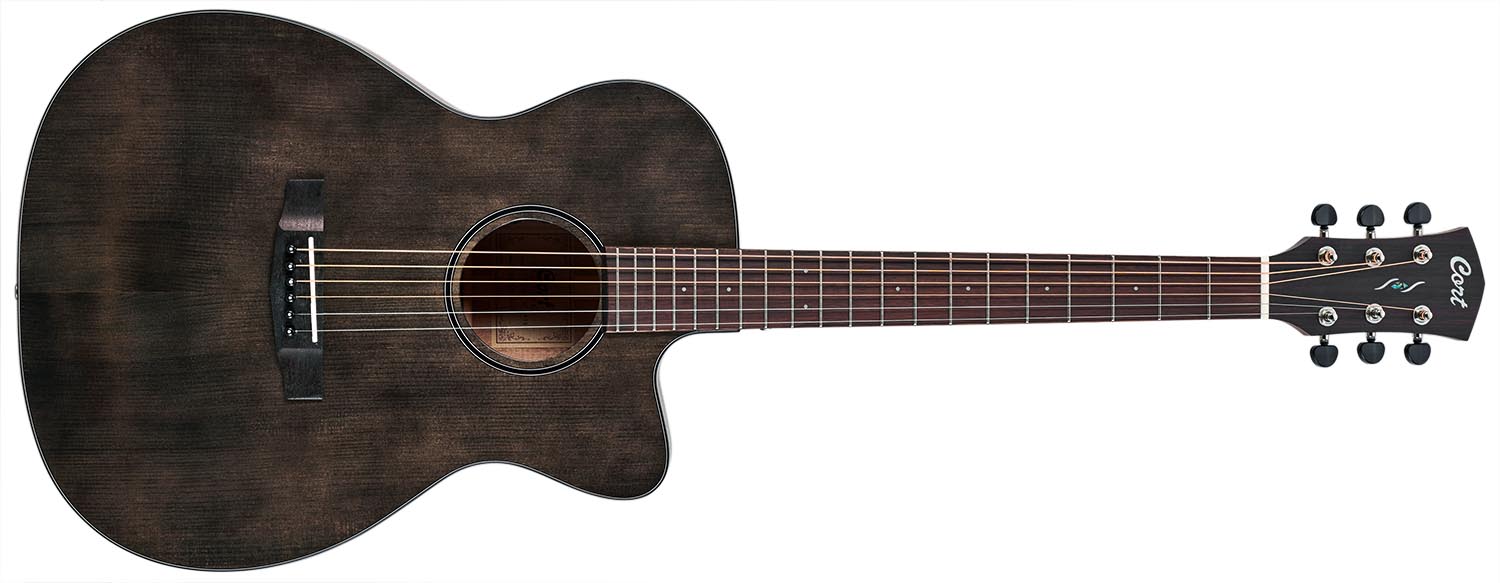
- PRICE: $/£499 (inc padded gigbag)
- ORIGIN: China
- TYPE: OM cutaway
- TOP: Spruce
- BACK/SIDES: Mahogany
- MAX RIM DEPTH: 103mm
- MAX BODY WIDTH: 381mm
- NECK: Mahogany
- SCALE LENGTH: 643mm (25.3”)
- TUNERS: Unbranded die-cast/black buttons
- NUT/WIDTH: Bone/43mm FINGERBOARD: Ovangkol FRETS: 20
- BRIDGE/SPACING: Ovangkol/bone saddle/55mm ELECTRICS: Fishman Sonicore/Sonitone
- WEIGHT (kg/lb): 1.71/3.76 OPTIONS: None
- RANGE OPTIONS: See Core-OC Mahogany
- LEFT˛HANDERS: No
- FINISH: Trans Black – open pore matte
Cort Core-OC Blackwood

- PRICE: $549/£525 (inc padded gigbag)
- ORIGIN: China
- TYPE: OM cutaway
- TOP: Blackwood
- BACK/SIDES: Blackwood
- MAX RIM DEPTH: 103mm
- MAX BODY WIDTH: 381mm
- NECK: Mahogany
- SCALE LENGTH: 643mm (25.3”)
- TUNERS: Unbranded die-cast/black buttons
- NUT/WIDTH: Bone/43mm
- FINGERBOARD: Ovangkol
- FRETS: 20
- BRIDGE/SPACING: Ovangkol/bone saddle/55mm
- ELECTRICS: Fishman Sonicore/Sonitone
- WEIGHT (kg/lb): 1.65/3.63 OPTIONS: None
- RANGE OPTIONS: See Core-OC Mahogany
- LEFT˛HANDERS: No
- FINISH: Lightburst – open pore matte
- CONTACT: Cort
With over 30 years’ experience writing for guitar magazines, including at one time occupying the role of editor for Guitarist and Guitar Techniques, David is also the best-selling author of a number of guitar books for Sanctuary Publishing, Music Sales, Mel Bay and Hal Leonard. As a player he has performed with blues sax legend Dick Heckstall-Smith, played rock ’n’ roll in Marty Wilde’s band, duetted with Martin Taylor and taken part in charity gigs backing Gary Moore, Bernie Marsden and Robbie McIntosh, among others. An avid composer of acoustic guitar instrumentals, he has released two acclaimed albums, Nocturnal and Arboretum.
The heaviest acoustic guitar ever made? Two budding builders craft an acoustic entirely from concrete because they “thought the idea was really funny”
“For years, the only 12-string acoustics I got my hands on, the necks always pulled off after a bit. I earned a lot of money replacing them!” Why one of the UK’s most prolific luthiers is a bolt-on acoustic die-hard












